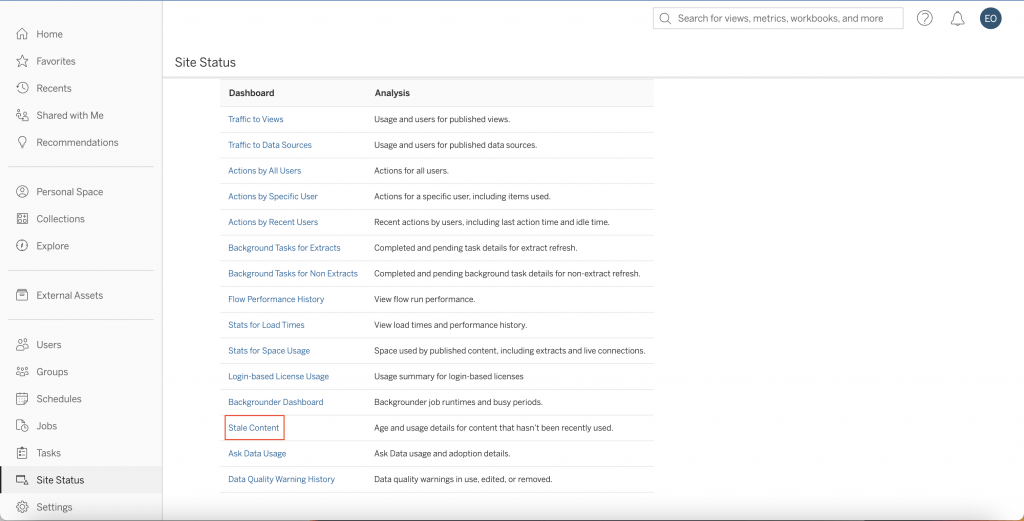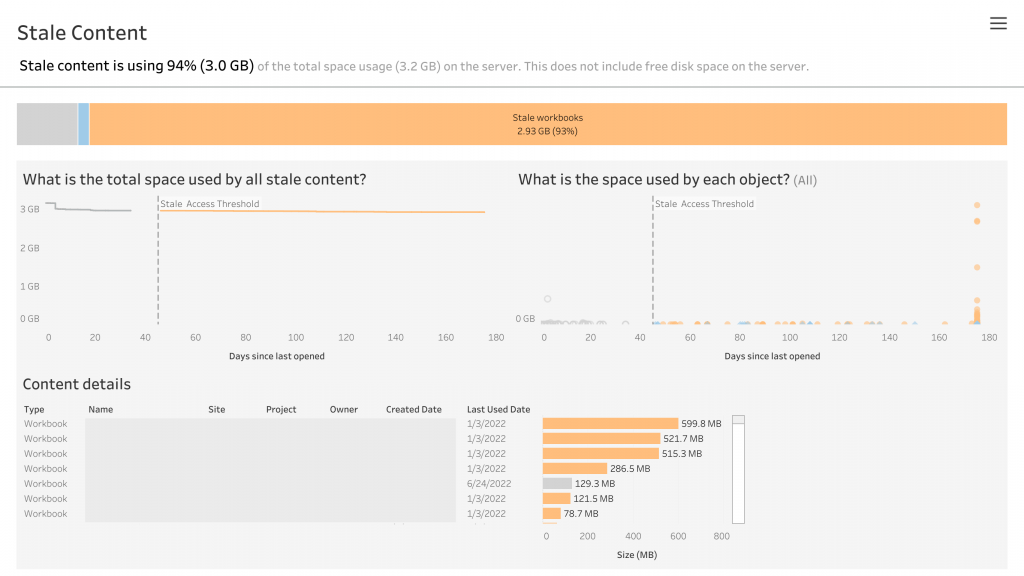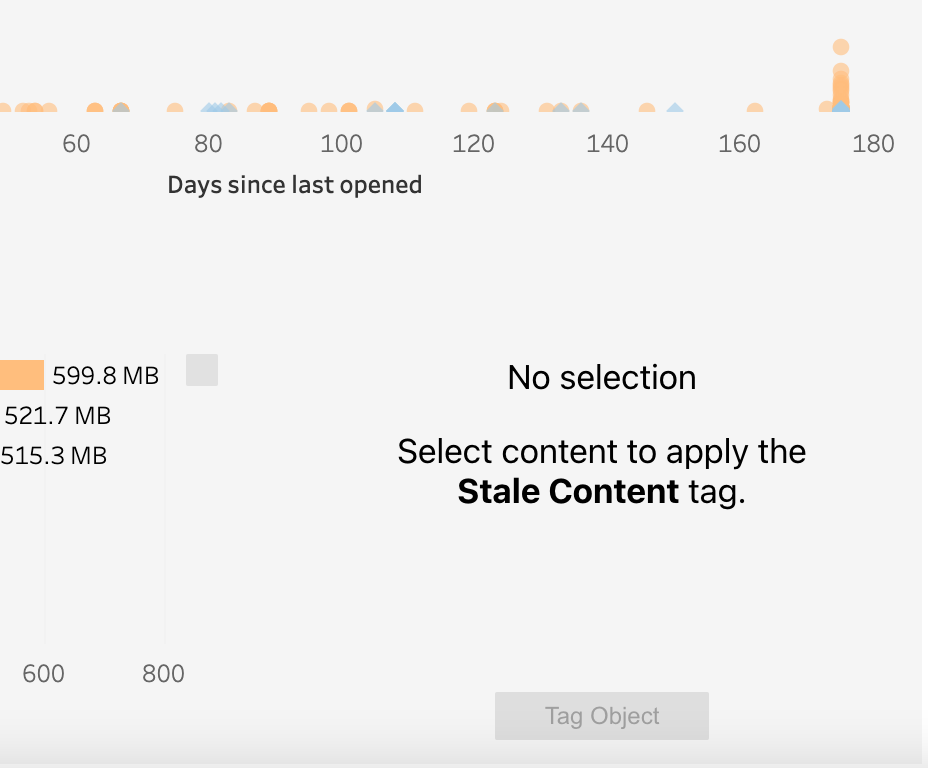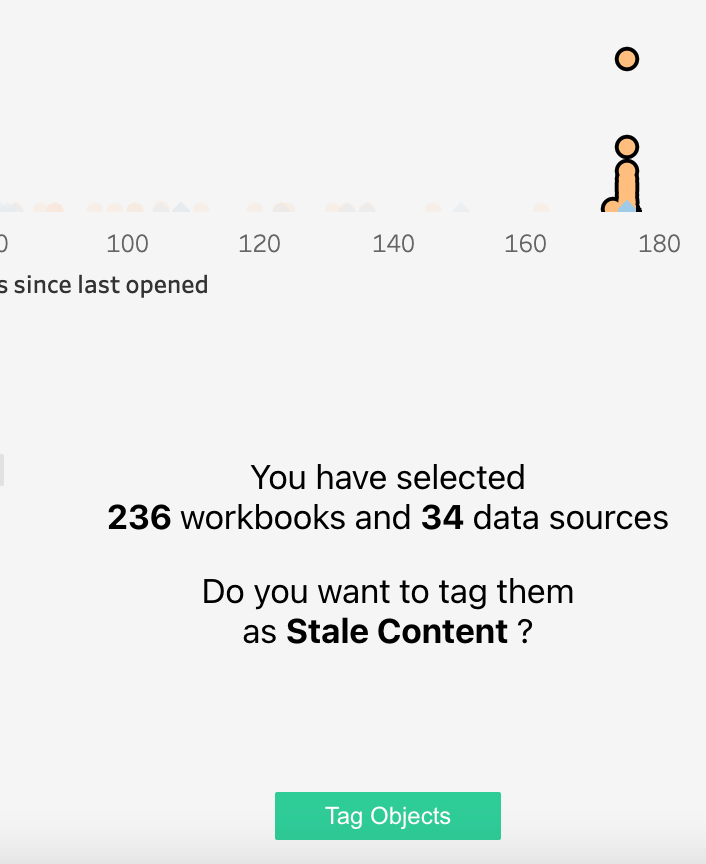Did you ever wonder how to see all unused content in your server and how you can deal with them? Within Tableau server in pre-built administrative views, there is an option for you to view and manage the stale content in your Tableau Server. Stale content in this case, means the workbooks and data sources that have not been used or accessed to in a specified amount of time. In this blog, I will introduce the Stale Content view in Tableau Server, go through its sections and explain its benefits.
The Stale Content View
Components of the View
At the home view, click on “Site Status” at the bottom left corner, then navigate to the “Stale Content” view:

Tableau Server will generate the stale content view after selection. It will look something like this:

This view gives you whatever there is to know about the content that is not being used on your server. From top down, first the view indicates how much content is stale in terms of size compared to the total with a stacked bar chart as a filter action separating active content, stale data sources and workbooks.
The line chart and the scatter plot chart below the interactive bar chart shows further details on the total amount of space used by content on the left and the size of each content on the right against “Days since last opened”. The threshold reference line sets apart the stale vs. active content difference that can be adjusted through the filters section with the hide/show button, accessed at the top right of the view. Hovering over the marks gives further metadata of the content.
Finally at the bottom part of the view, we can see the content details in a tabular form with their size as a bar chart. This section can show results of the filtering applied by actual filters of the view, the bar chart filter at the top and selections made on the scatter plot.
Filtering Tab
Once the hide/show button is pressed, further filtering options are shown:

This section is used to set the stale threshold between minimum of 1 and maximum of 120 days. Further options include filtering by project folders, content owners, size and content type.
Tagging
Content administrators have the ability to tag content as stale through this view. The bottom right corner of the view is reserved for this. When no selection is made, the bottom corner will display this:

As soon as content is selected from the view above with the scatter plots, the option to tag content as stale is available.

Once “Tag Objects” is selected, the content can be found through the Explore section under the tag “Stale Content”. From then on, you can decide to move them to another folder or delete them all together.
Scheduling Archiving of Stale Content
If the Server Management Add-on is installed on your Tableau Server, you can manage archiving stale content. With the help of the Content Migration Tool, regular schedules can be run to tag stale content and move them to another folder where they can be scheduled for deletion. For more information on Content Migration tool, see this page.
For keeping a clean and structured database in Tableau Server, the Stale Content view can be a very useful guide. Since free space is quite valued for server performance, it is important to use this view to have an overview of the unused content. With more people in the organisation using the server, unused workbooks, data sources can pile up and can be hard to keep track of what is used and what it not. The Stale Content view is the perfect guide in Tableau Server for dealing with this.
Visit our site The Information Lab NL to see more blog posts, training and consultancy services regarding Tableau, Alteryx and Snowflake.


